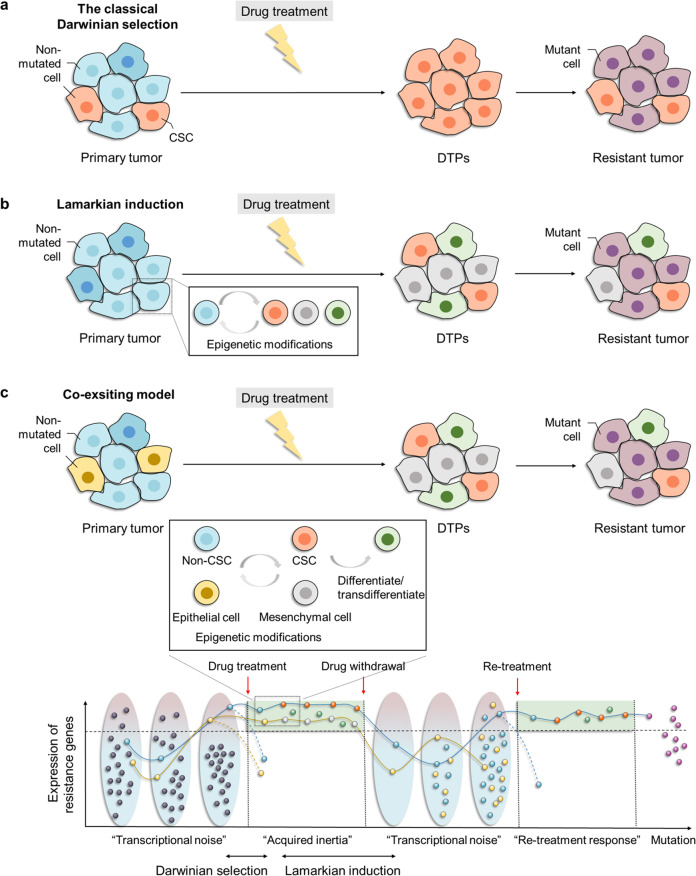Fig. 1.
The genesis of DTPs according to natural selection theory (classical Darwinian selection), the Lamarckian induction concept, and the coexisting model. a The natural selection theory shows that the preexisting DTPs, here represented by CSCs, can be selected and enriched upon drug exposure. b The concept of Lamarckian induction attaches importance to the natural aptitude of tumor cells in adapting to pharmacologic interventions through different levels of epigenetic modifications, giving rise to the emergence and coexistence of DTPs in varying tolerant states. c The coexisting model suggests the dynamic transcriptional fluctuation at a single-cell level of resistance-related markers (“transcriptional noise”). A small fraction of tumor cells, whose expression of these resistance-related genes exceeds a certain threshold at the moment of treatment, can survive and be selected (the blue and yellow dot), marking a return to classical Darwinian selection. However, with increasing duration of drug exposure, such a stochastic, transient, fluctuated “survival mode” arrives at drug-refractory state through epigenetic modifications, ultimately resulting in the establishment of a DTP pool. These alterations in the epigenome, which can be summed up as “acquired inertia,” are in agreement with the concept of Lamarckian induction. The solid line represents the changes of resistance-related markers expression with treatment, while the dotted line represents those without treatment (below). CSC cancer stem cell, DTPs drug-tolerant persisters

